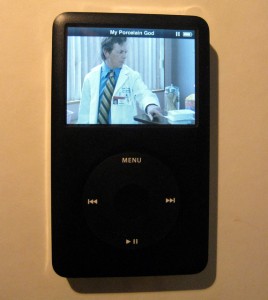The problem with buffeting and choppy fans
Manufacturers and retailers are great at solving problems we didn’t know that we had. Sometimes, our "problem" is lack of social prestige.
Check out this high tech “Air Multiplier” I recently spotted at Target. Here’s what it offers. No blades. No “buffeting.” No “choppy air.” Silly me. I thought that fans were supposed to buffet the air and make it choppy. Now I know, however, that the fans I already own are defective and that I need to fix this problem by purchasing several of these $300 Dyson “Air Multipliers.”
 Why would someone buy such an expensive contraption when you can easily buy a decent fan for $15 and a great fan for $75? Geoffrey Miller explains this phenomenon in an incredibly well-written and well-researched book titled Spent: Sex, Evolution and Consumer Behavior. I could write 100 posts commenting on the various sections of Spent; Miller's book is that good. I’m well on my way. See here, for example, and here.
Out of curiosity, I visited the Dyson website to see whether this “Air Multiplier” is more energy efficient that a traditional fan. Information about energy usage is conspicuous by its absence on Dyson's site, however. I know enough about marketing that if the Air Multiplier were more energy efficient than traditional fans, this information would be prominently displayed on Dyson's packaging. Along the same lines, note that the Dyson Air Multiplier is "safe," even though all modern fans come with grill designed to keep fingers away from the blades. I they are going spin their product's qualities wildly (no pun intended), they would certainly make sure that we were informed about the Air Multiplier's ability to save energy--if only that were true.
[For comparison, I have inserted a few old-fashioned "fans" that you can buy at Target, a few feet down from the throne of the Air Multiplier. As you can see, these fans are considerably cheaper. In fact, for the price of one Air Multiplier, you could buy eighteen $16 fans. ]
Why would someone buy such an expensive contraption when you can easily buy a decent fan for $15 and a great fan for $75? Geoffrey Miller explains this phenomenon in an incredibly well-written and well-researched book titled Spent: Sex, Evolution and Consumer Behavior. I could write 100 posts commenting on the various sections of Spent; Miller's book is that good. I’m well on my way. See here, for example, and here.
Out of curiosity, I visited the Dyson website to see whether this “Air Multiplier” is more energy efficient that a traditional fan. Information about energy usage is conspicuous by its absence on Dyson's site, however. I know enough about marketing that if the Air Multiplier were more energy efficient than traditional fans, this information would be prominently displayed on Dyson's packaging. Along the same lines, note that the Dyson Air Multiplier is "safe," even though all modern fans come with grill designed to keep fingers away from the blades. I they are going spin their product's qualities wildly (no pun intended), they would certainly make sure that we were informed about the Air Multiplier's ability to save energy--if only that were true.
[For comparison, I have inserted a few old-fashioned "fans" that you can buy at Target, a few feet down from the throne of the Air Multiplier. As you can see, these fans are considerably cheaper. In fact, for the price of one Air Multiplier, you could buy eighteen $16 fans. ] Chapter 7 of Spent is titled “Conspicuous Waste, Precision, and Reputation. In this chapter, Miller convincingly argues that we don’t buy to merely have; rather, many of our purchases are for the purpose of displaying qualities to others. We are very much like peacocks, it turns out. We like to conspicuously waste resources (this is an expensive and thus reliable signal that we have enough resources to waste). We also engage in conspicuous precision, spending lots of money to display that we have not only resources, but also an appreciation of technology that goes far beyond the mental capabilities of those people are willing to settle for those damned buffeting fans.
Chapter 7 of Spent is titled “Conspicuous Waste, Precision, and Reputation. In this chapter, Miller convincingly argues that we don’t buy to merely have; rather, many of our purchases are for the purpose of displaying qualities to others. We are very much like peacocks, it turns out. We like to conspicuously waste resources (this is an expensive and thus reliable signal that we have enough resources to waste). We also engage in conspicuous precision, spending lots of money to display that we have not only resources, but also an appreciation of technology that goes far beyond the mental capabilities of those people are willing to settle for those damned buffeting fans.

